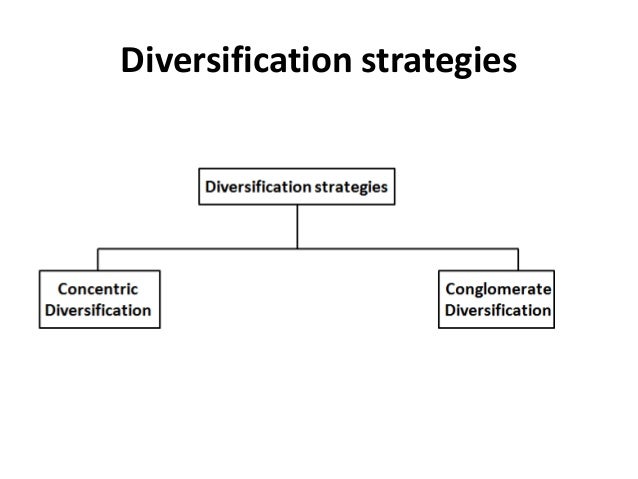The potential for union difficulties or adverse government regulations concerning product safety or the environment. Industry vulnerability to recession, inflation, high interest rates, or shifts in government policy. Three types of companies make particularly attractive acquisition targets: Companies whose assets are "undervalued" - opportunities may exist to acquire such companies' for less than full market value and make substantial capital gains by reselling their assets and businesses for more than their acquired costs.
- astro forex trading!
- Who was Igor Ansoff?.
- eod trading signals.
- hotforex broker minimum deposit!
- Maintenance page;
Companies that are financially distressed. Companies that have bright growth prospects but are short on investment capital. Unrelated diversification has appeal from several financial angles: Business risk is scattered over a variety of industries, making the company less dependent on any one business. Capital resources can be invested in whatever industries offer the best profit prospects; cash from businesses with lower profit prospects can be diverted to acquiring and expanding businesses with higher growth and profit potentials. Corporate financial resources are thus employed to maximum advantage.
Company profitability is somewhat more stable because hard times in one industry may be partially offset by good time in another.
To the extent that corporate managers are astute at spotting bargain-priced companies with big upside profit potential, shareholder wealth can be enhanced. Despite these drawbacks, unrelated diversification can be a desirable corporate strategy. Horizontal Related Acquisition. Finally, the low-carbon strategies for individual businesses were integrated into an overarching stance on environmental issues that would underpin the group's aspirations, policies, metrics, regulatory approach, internal and external communications, brand positioning, and compliance mechanisms. The McKinsey team supported the client in defining its position on climate change and creating central capabilities, measurement systems, board dialogues, opportunity scans, and other processes to drive individual businesses toward their abatement targets.
With our support, the client created roadmaps for achieving significant emission reductions in the four businesses that accounted for almost 85 percent of the group's manufacturing footprint. In the metals business, for example, the team identified measures that would reduce carbon intensity by 15 percent within ten years.
- most important economic news forex!
- Conglomerate Definition.
- inverted rsi strategy.
- forex trading time in india!
- ringgit to usd forex.
In power generation, it identified methods to achieve a 50 percent reduction in carbon intensity over 15 years even while the business quadrupled in size. Opportunities were also found for the businesses to reduce their carbon footprint and energy costs by about 10 per cent through operational changes that could be carried out fairly quickly at minimal capital outlay.
Characteristics of a Conglomerate Company
To support long-term implementation, McKinsey assisted the client in training over a hundred executives from a wide range of different businesses to make them more sensitive to climate change issues and equip them to make systematic assessments of the risks and opportunities in their businesses, using tools such as the global greenhouse gas abatement cost curve.
These new "climate change champions" then helped each business to design its own low-carbon strategy and drive a communications effort from executive level through middle management to the front line.

The effort helped the group to address more than 95 percent of its manufacturing footprint within two years, an achievement of which it is extremely proud. We continue to work with the client's high-level central committee as it drives the program across the group and into the next wave of companies.
Categories
Accept Use minimal essential cookies. Back to Impact stories Creating strategies to reduce carbon emissions while positioning the group for long-term growth. Challenge A conglomerate with worldwide operations in more than 90 different businesses, many of them in carbon-intensive sectors, had ambitious plans for the next ten years and wanted to find ways to achieve its growth targets while reducing its carbon footprint.
Discovery Our team began by helping the client create a baseline carbon footprint for its companies for the present day and for , taking into account existing growth plans in clean technologies and identifying cost-saving carbon abatement measures that could be implemented immediately. Impact With our support, the client created roadmaps for achieving significant emission reductions in the four businesses that accounted for almost 85 percent of the group's manufacturing footprint. An oil and gas giant finds green growth opportunities in biobased chemicals.
The Four Types of Diversification Strategies | Spring Green Franchise Opportunity
Developing a green growth strategy for a diversified conglomerate. How a city paved the way to a new low-carbon economy. Lean optimization saves 25 percent of operating costs at a wastewater plant.